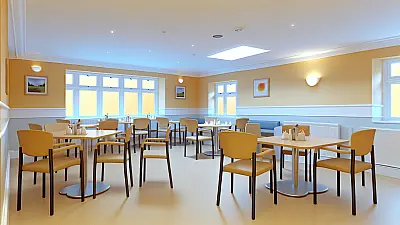WEST SAINT PAUL, MN - Southview Acres Healthcare Center faced significant violations during a January 2025 inspection when state surveyors documented failures to properly prevent and manage pressure ulcers in multiple residents, including delayed medical notifications and inconsistent use of protective equipment.

Critical Gaps in Pressure Ulcer Prevention
The most serious violation involved a 65-year-old resident with diabetes and multiple health conditions who developed two new stage II pressure ulcers on both buttocks despite having protective measures ordered. The resident, identified as R142, had previously healed from a stage 2 pressure ulcer in December 2024, but facility staff failed to implement comprehensive prevention protocols.
On January 5, nursing staff documented that the resident was "breaking down on the coccyx area due to refusing to be repositioned while sitting in his chair." However, the facility's physician was not notified of these new wounds until three days later, violating standard medical protocols that require immediate physician notification when pressure ulcers develop.
During the inspection, surveyors observed the resident experiencing pain during care, stating "it hurts!" when nursing assistants cleaned the affected areas. The left buttock pressure ulcer measured 2.3 cm by 1.9 cm, while the right measured 1 cm by 1 cm.
Medical Significance of Pressure Ulcer Management
Pressure ulcers represent serious medical complications that can lead to infection, prolonged healing times, and increased mortality risk in vulnerable populations. Stage II pressure ulcers involve partial-thickness skin loss extending into the dermis, requiring immediate medical intervention to prevent progression to deeper, more dangerous wounds.
The facility's physician assistant emphasized the critical nature of timely notification, explaining that delayed treatment can cause ulcers to increase in size, create additional pain, and provide entry points for serious infections. When pressure ulcers go unaddressed, they can progress to life-threatening conditions requiring hospitalization or surgical intervention.
Proper prevention protocols include regular repositioning every two hours, use of pressure-relieving surfaces, moisture management, and nutritional support. The resident's laboratory results showed concerning values including low albumin (3.8) and hemoglobin (11), both indicators that can affect wound healing capacity.
Systemic Failures in Care Plan Implementation
The inspection revealed significant gaps in the facility's care planning process. The resident's care plan lacked specific turning and repositioning schedules despite his high risk status, with a Braden Scale score of 15 indicating pressure ulcer risk. The nurse manager acknowledged this oversight, stating "I missed it" when reviewing the incomplete care plan.
More troubling, the facility failed to document the resident's frequent refusal of repositioning care, which should have triggered reassessment and modified interventions after his previous pressure ulcer healed. Staff reported that the resident "often refuses to reposition and likes to sit down on his recliner chair for most of the day," but this critical information was not incorporated into updated prevention strategies.
The facility's registered dietitian had not reviewed recent laboratory values that could impact healing, stating she "trusted the hemoglobin and oxygenation levels more" than albumin levels, despite albumin being a key nutritional marker for wound healing.
Failure to Follow Protective Equipment Orders
A second major violation involved another high-risk resident with severe cognitive impairment, Parkinson's disease, and existing pressure ulcers. This resident had specific physician orders requiring protective padding between the knees both in bed and wheelchair to prevent tissue breakdown from contracted limbs rubbing together.
During multiple observations over three days, inspectors documented the resident consistently missing the required protective devices. On January 6, 7, and 8, the resident was observed without the ordered blue wedge abductor in his wheelchair and without pillow padding between knees while in bed.
Nursing staff acknowledged these failures during interviews. One licensed practical nurse stated, "His knees bend inwards to touch so there needs to be something between them when he is in bed and in the wheelchair." A nursing assistant confirmed, "a pillow should be between the knees when in bed and it is not."
Additional Issues Identified
The inspection documented several other concerning practices, including inadequate wound assessment protocols, missing incident reports for new pressure ulcers, and incomplete nutritional assessments that failed to include critical laboratory values like hemoglobin and albumin levels in nutrition evaluations.
The facility's director of nursing acknowledged that proper protocols required immediate skin assessments, physician notifications, Braden Scale updates, and incident reports when new pressure ulcers develop, but these steps were not consistently followed.
The violations highlight systemic issues in staff training, care plan implementation, and quality monitoring that put vulnerable residents at risk for preventable complications that can significantly impact their health outcomes and quality of life.
Full Inspection Report
The details above represent a summary of key findings. View the complete inspection report for Southview Acres Healthcare Center from 2025-01-09 including all violations, facility responses, and corrective action plans.
💬 Join the Discussion
Comments are moderated. Please keep discussions respectful and relevant to nursing home care quality.